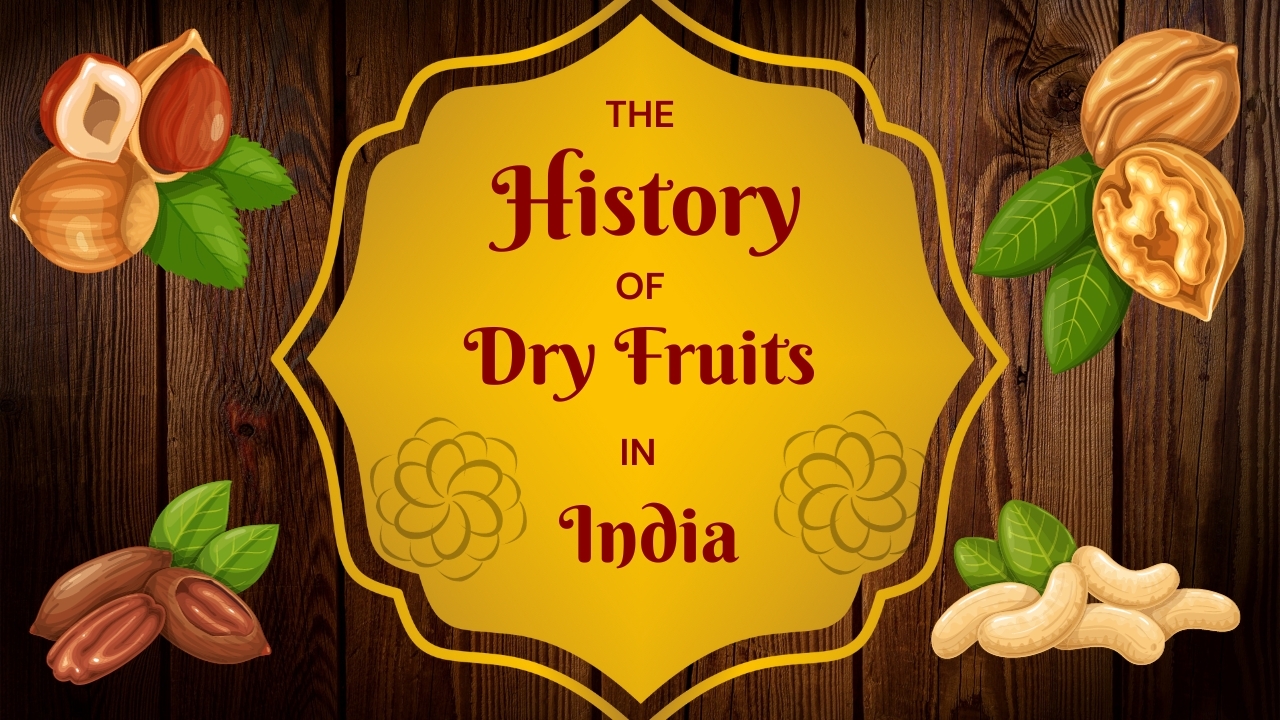Currently Empty: ₹0.00

India is a land of diverse cultures, religions, and gastronomy. For centuries, dry fruits have been an integral part of Indian culture, used in religious ceremonies and festivals, and bringing a variety of flavors to traditional dishes. In this article, we take a look at the history and cultural significance of dry fruits in India, and why they are still a much-loved part of Indian cuisine today.
A Brief History of Dry Fruits in India
Dry fruits have been a part of Indian cuisine for centuries, and evidence suggests that Indian traders were exporting dried fruits as early as the 5th century BC. In ancient India, dry fruits were used as a form of currency, and were also used in religious ceremonies and festivals.
Dry fruits are also mentioned in ancient Hindu scriptures, such as the Vedas and the Mahabharata, which make reference to the use of dry fruits in religious offerings. In the Mahabharata, the Pandavas are said to have offered dry fruits as a part of their offering to Lord Krishna.
Types of Dry Fruits in India
India is home to a multitude of dry fruits, each with its own unique flavor and texture. Some of the most popular types of dry fruits in India include:
Makhana:
Makhana is a type of lotus seed that is often used in Indian cuisine. It is a rich source of protein, fiber, and calcium, and has a mild, nutty flavor. Makhana is often used in dishes such as kheer and kulfi, and is also eaten as a snack.
Walnuts:
Walnuts are one of the most popular dry fruits in India, and are a rich source of Omega-3 fatty acids. They are often used in curries, desserts, and as a garnish for dishes such as biryani and pulao.
Almonds:
Almonds are a popular dry fruit in India, and are often used in dishes such as halwa and kheer. They are a rich source of Vitamin E and magnesium, and are also used to make almond oil, which is used in Ayurvedic treatments.
Cashews:
Cashews are a rich source of iron, and are often used in curries and desserts. They are also eaten as a snack, and are often roasted and salted for a delicious and crunchy treat.
Cultural Significance of Dry Fruits
Dry fruits are an important part of Indian culture, and are used in many religious ceremonies and festivals. During the festival of Diwali, for example, dry fruits are given as gifts and offered as prasad (a religious offering).
Dry fruits are also used in many traditional Indian dishes, such as kheer and halwa, and are often served as a dessert at weddings and other occasions. They are also often exchanged as gifts between friends and family members.
Best Online Dry Fruits Seller in Rajasthan
Rajasthan is known for its unique cuisine and culture, and is also home to some of the best dry fruits in India. If you are looking for the best online dry fruits seller in Rajasthan, the best place to start is Mewa Mitra, an online store that offers a variety of dry fruits, including makhana, walnuts, almonds, and cashews.
Mewa Mitra specializes in providing authentic Rajasthani dry fruits and snacks, and all their products are sourced directly from local farmers. They offer dry fruits at competitive prices, and their products are of the highest quality.
Conclusion
Dry fruits have been an integral part of Indian culture for centuries, and are still a much-loved part of Indian cuisine today. From makhana to walnuts, almonds, and cashews, dry fruits bring a variety of flavors and textures to traditional dishes. They are also an important part of religious ceremonies and festivals, and are often given as gifts. If you are looking for the best online dry fruit seller in Rajasthan, Mewa Mitra is the place to go.
